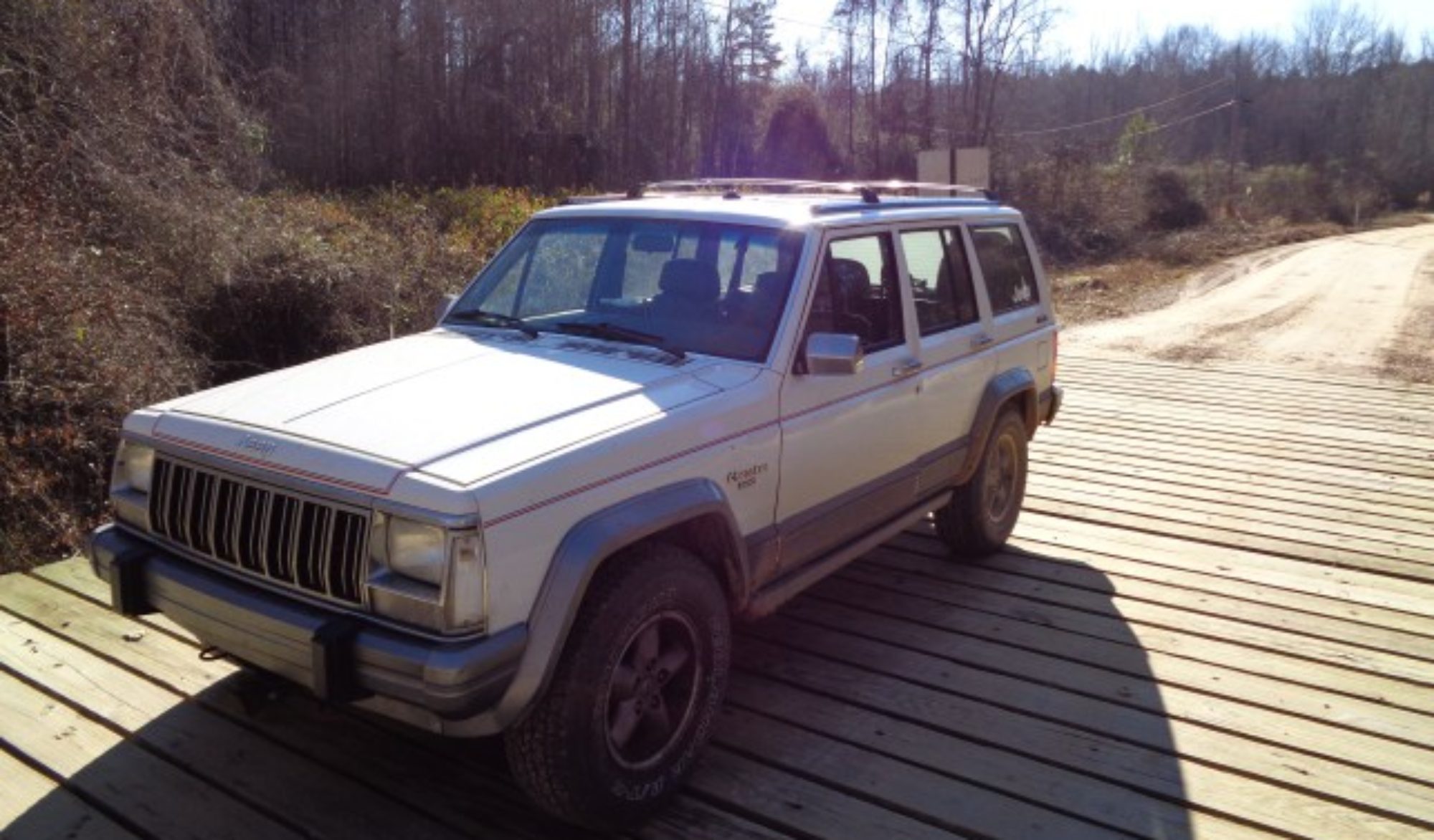Jeep Cherokee XJ Dash Fire
I was using Jennifer’s XJ to move my race car back into the shop. Just as I had cut loose the tow strap I noticed a glow in floor board. At first, I thought her under dash interior lights were trying to come on, but I knew they normally don’t work.
I leaned over to see what was going on and saw flaming drops of plastic falling into the floor. I quickly drove closer to the shop door and ran inside to get some water. I told Jennifer her Jeep was on fire and ran back out to splash water on the floor. Since the fire was actually inside the HVAC duct, the water did not help at all. Jennifer tried more water but that was not helping either.
I then got the fire extinguisher out of the race car and pointed the nozzle under the dash. A quick blast had it all out. However, now everything was covered in pale yellow powder.
Once the excitement was over, the cleanup and diagnosis began. The fire was located in the HVAC duct and the blower wheel had melted. The most likely ignition source was the resister pack.
She had been having trouble recently with blower motor fuse blowing. I had traced the problem to the Tan colored wire and after installing a replacement control switch, I had disconnected that wire. However, I disconnected it only at the switch. I did not remove it from the resister pack. At the time I did not realize that if it shorted, it could back feed from the resister and get the resister very hot.
She got a new blower motor and we used an old fan wheel we had in stock. Removing it from the old motor was quite a chore and had we known how hard it would be we would have simply bought a new wheel with motor. To get the old blower off, we first removed the clip. Then we used a heat gun to soften the hub and used a screwdriver to pry it apart until it would slide off the shaft. However, this operation made the shaft too loose on the new motor. We solved that by heating it again with the hot air gun while the spring clamp was in place. When it cooled it was tight.
When we tried to fit the assembly into place however, we found part of the side of the duct work had melted and interfered with blower wheel. Again, we used the heat gun to reshape the inside of the duct work so that the fan would clear. It still rubs a little and sometime makes a squeak, but it fits and moves air. Later the entire duct will be swapped out; but that is a job for another day or two.
To seal the hole that had melted in the duct, we used metal duct tape. Working from the foot well and through the blower motor opening we made two layers of tape to seal the hole. Once it was all in place we installed a replacement resister pack from another donor vehicle. This time’ I disconnected the tan wore on both ends. Access to the shorted area will have to wait until we pull the dash to replace the HVAC duct.
For now, she has heat and air so the Jeep is serviceable. However, even after much vacuuming, powder from the fire extinguisher still continues to blow out of the vents from time to time.
I also gave her a new fire extinguisher to keep in her Jeep from now on.
